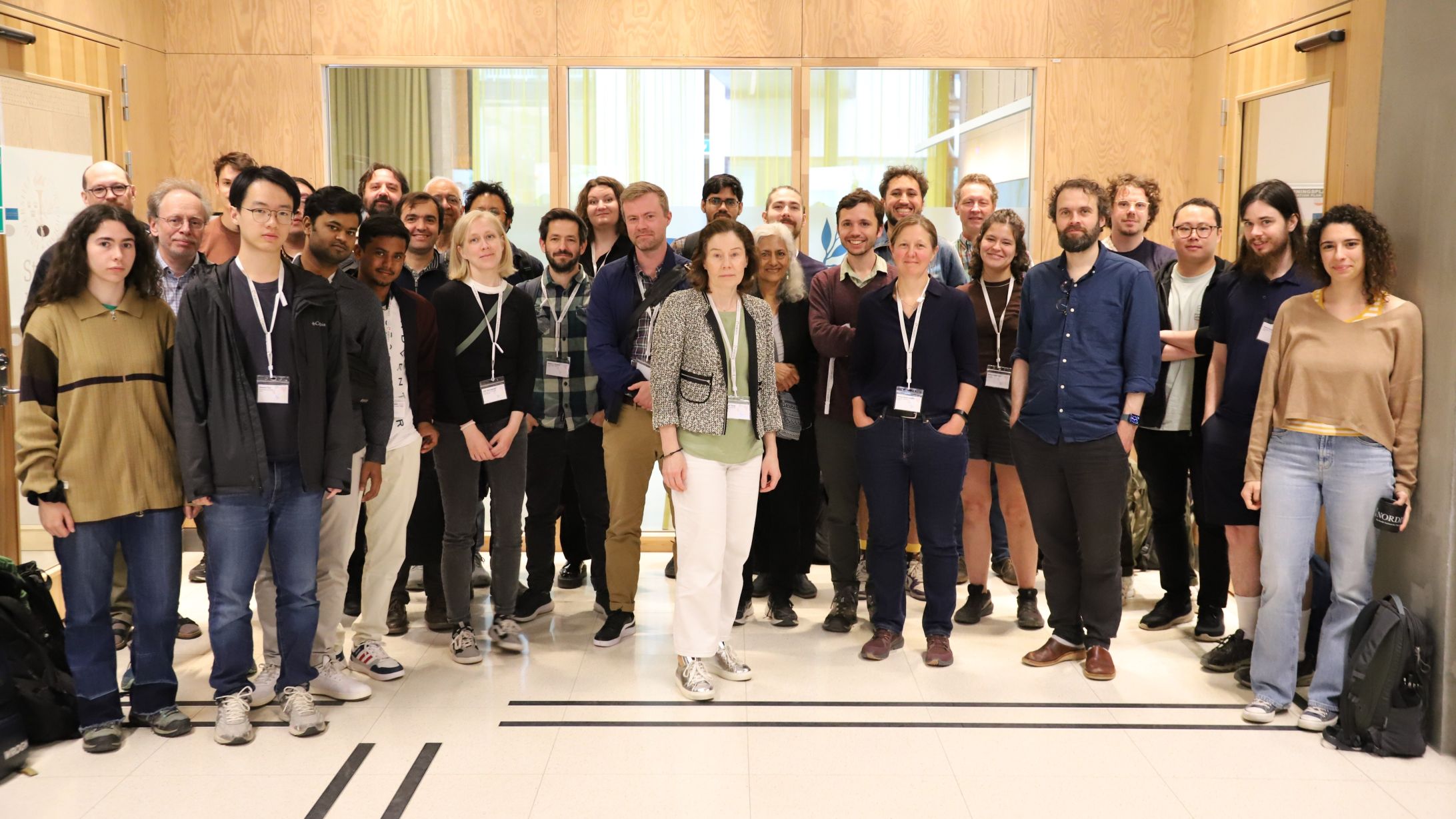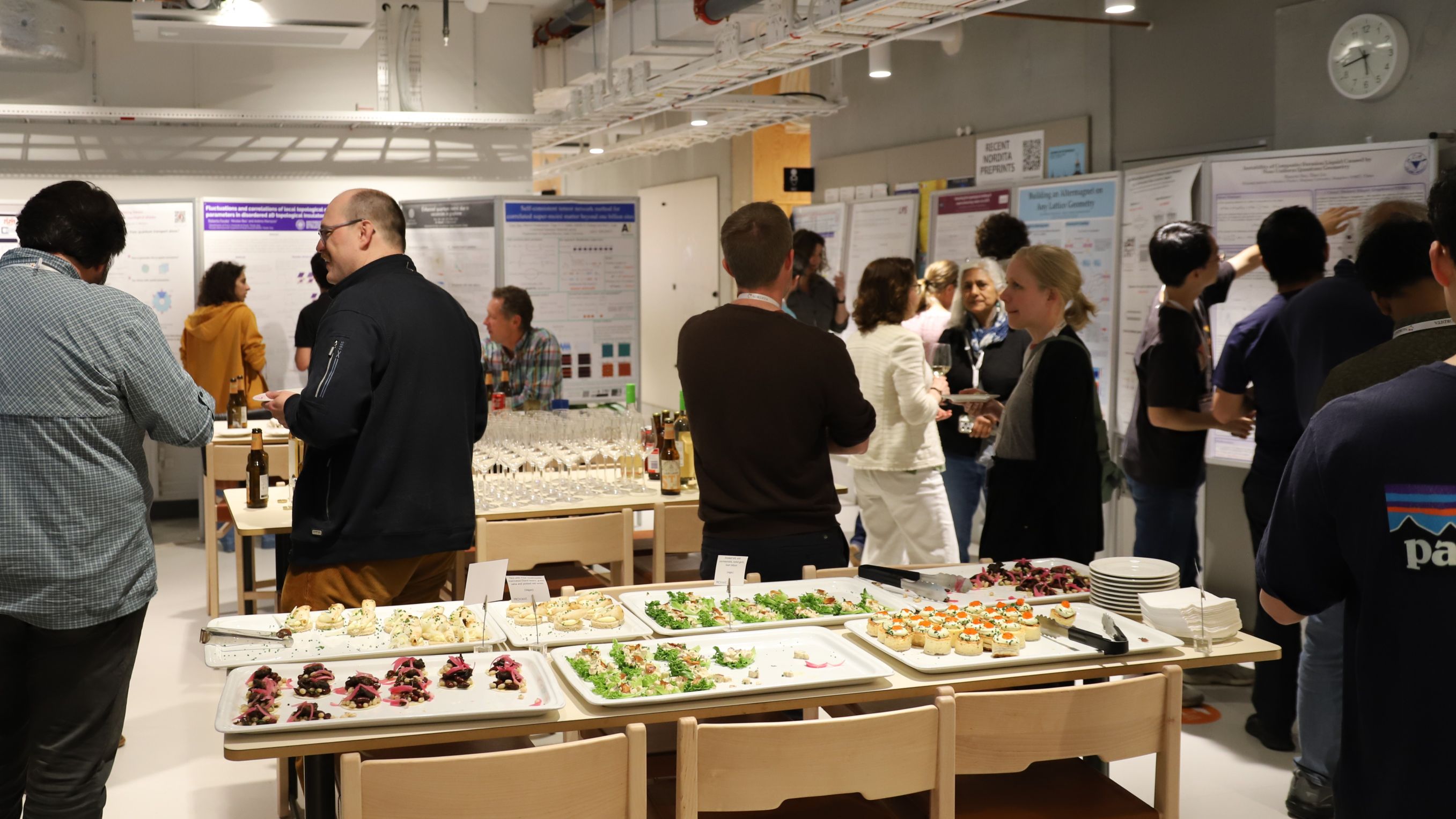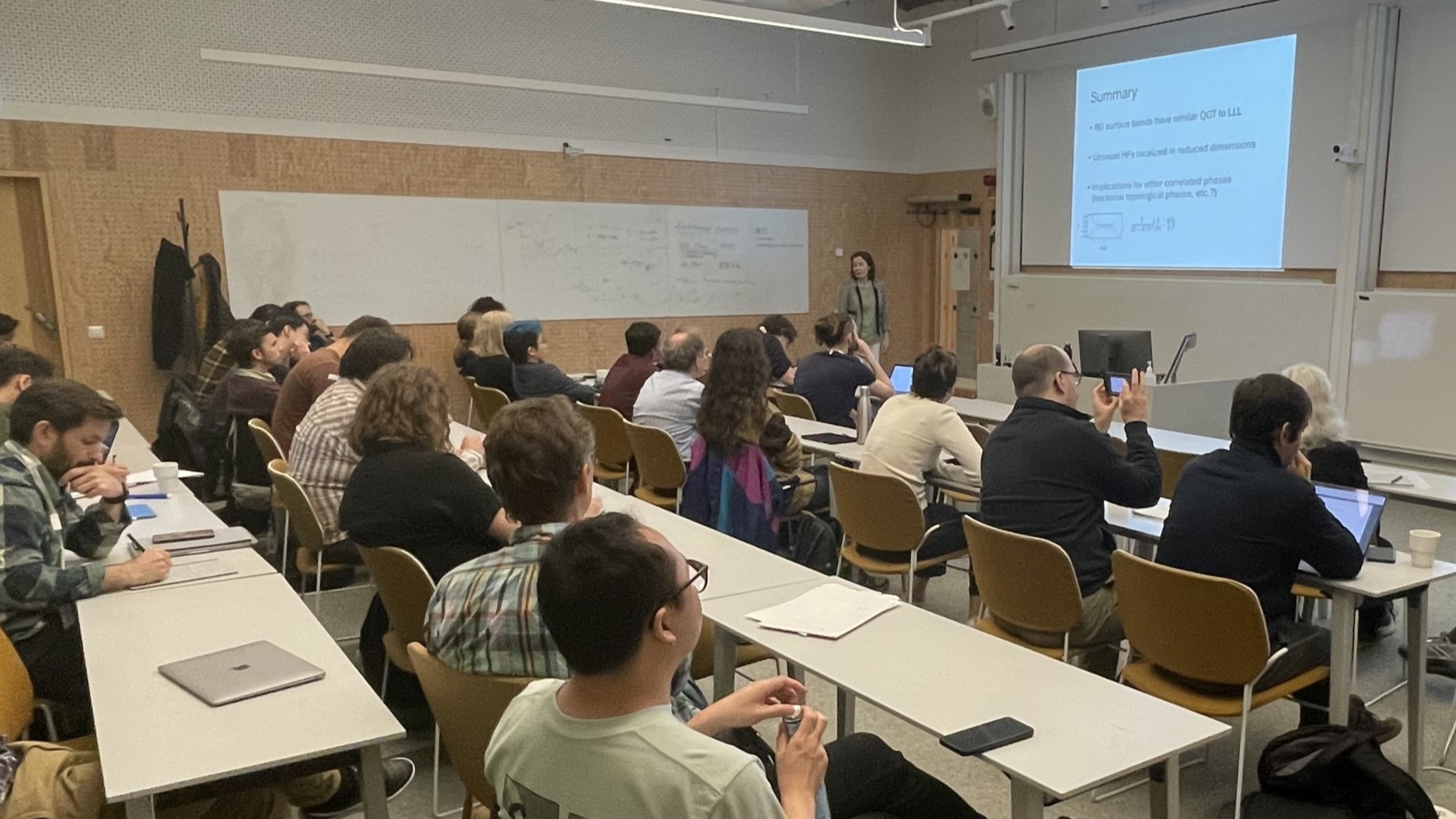
The program participants outside of the conference center at Nordita.
This past summer, Nordita hosted the program Topology and Geometry Beyond Perfect Crystals, a three-week focus program bringing leading researchers to Stockholm to explore condensed matter physics.
Topological phases have become an important lens for understanding quantum materials, and most research has focused on perfect crystals. This program explored how these ideas extend to more complex systems, including amorphous solids, quasicrystals, and disordered materials. “We are trying to describe topology without relying on perfect crystal periodicity,” explained Adolfo Grushin, one of the organizers. “We wanted to see how topological phenomena can survive, change, or even emerge in highly disordered systems.”
The program intentionally connected different communities. Topology researchers usually work in crystalline settings, while those studying disordered or non-crystalline systems often overlook topological effects. By mixing these perspectives, the program created opportunities for researchers to explore new collaborations. “Experiments that accidentally produce amorphous systems are often discarded as ‘junk.’ Viewed through the lens of topology and disorder research, these samples can reveal unexpected insights,” Adolfo noted.
The organizers praised Nordita’s format: extended workshops that let ideas breathe and a dedicated event team handling practicalities so organizers could focus on science. “The atmosphere among participants was really alive and vibrant! The three-week format allows ideas to develop and collaborations to form,” said Adolfo and co-organizer Annica Black-Schaffer.
The program aimed to deepen understanding of topology in new contexts and explore longstanding questions in condensed matter physics, including the effects of disorder on superconductivity and the search for new, enhanced superconductors.

Participants discussing and mingling during a lively poster session

One of the participant's presenting her research.